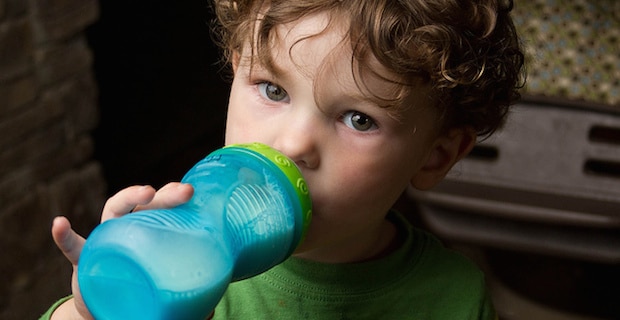
Scientists have uncovered an association between the plastics ingredient called bisphenol A (BPA) and autism spectrum disorder in children. Although researchers have long suspected that BPA had a role in autism, this is the first time that “We’ve shown there is a link,” according to the study’s lead author, T. Peter Stein, of Rowan University School of Osteopathic Medicine.
BPA and its cousin BPS, which recently has been shown to be similarly hazardous to health, have been associated with a wide range of health issues. Some of those conditions include infertility, reproductive disorders, heart disease, depression, diabetes, sex hormone changes, and memory problems.
Read about 5 ways to avoid BPA
In previous research, experts found positive associations between autism spectrum disorder and exposure to various chemicals, including BPA, hazardous air pollutants, and pesticides. Scientists also have uncovered evidence that BPA may be an important risk factor in genetically susceptible children by prompting oxidative stress and dysfunction of the mitochondria, which are the power plants of the body’s cells.
In this new study, the research team, which also included experts from Rutgers New Jersey Medical School, analyzed urine samples from 46 children with autism and 52 healthy children for levels of free BPA and total BPA concentrations. Urine is studied because BPA becomes water soluble when it meets up with glucose in the liver. That’s where BPA is converted to glucuronide and then leaves the body in urine.
When the scientists analyzed all the urine samples, they discovered that the children with autism had about three times the number of statistically significant correlations between metabolites and total BPA than did the healthy children. In addition, the number of statistically significant correlations with fraction of BPA bound was about 15 times greater in the children with autism.
Translation? Stein pointed out that “Other studies involving rodent data have shown that BPA functions as an endocrine disruptor, but ours is the first to show this in humans and the first to associate it to autism.”
Read about high fructose corn syrup and autism
What does this mean for concerned parents? More research is needed, but the authors noted that it might be a good idea for pregnant women and for children with autism to reduce their exposure to BPA. Items associated with BPA include water bottles, sippy cups, infants’ and children’s plastic toys, cash register receipts, canned foods (BPA in the lining of the cans), and plastic food storage containers.
Image: Gordon
ReferencesDe Cock M et al. Does perinatal exposure to endocrine disruptors induce autism spectrum and attention deficit hyperactivity disorders? Acta Paediatrica 2012 Aug; 101(8): 811-18
Kaur K et al. Bisphenol A induces oxidative stress and mitochondrial dysfunction in lymphoblasts from children with autism and unaffected siblings. Free Radical Biology & Medicine 2014 Nov; 76:25-33
Stein TP et al. Bisphenol A exposure in children with autism spectrum disorders. Autism Research 2015; DOI:10.1002/aur.1444




